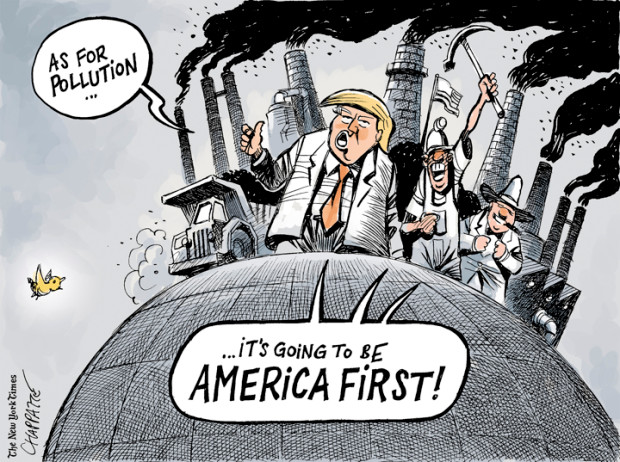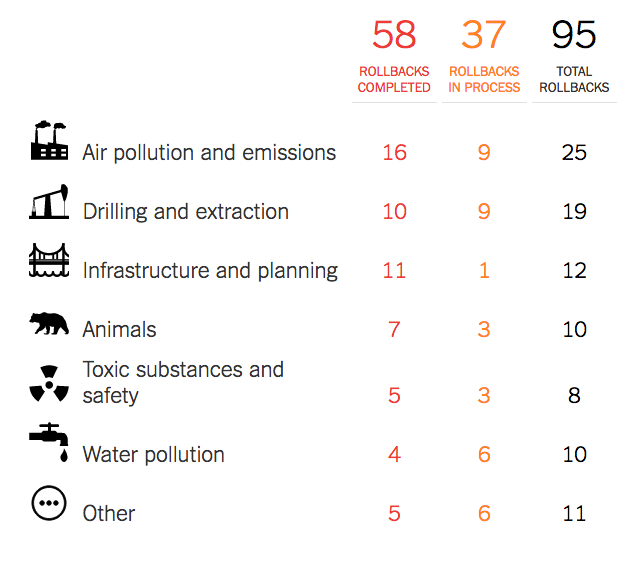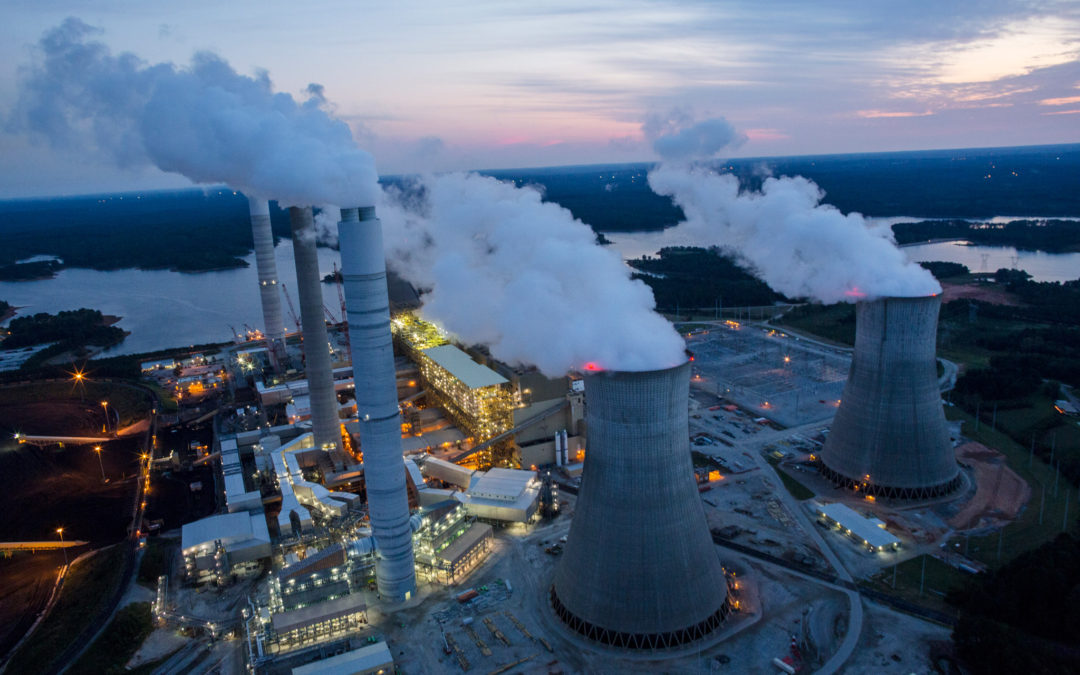
I try not to get too upset at this President, or his supporters anymore. I’ve had to stomach three years of this mess in our government, and by extension, the social fabric among its citizens. It hasn’t been good for any part of my physical constitution, stress levels, and pretty much, my entire well being. Sure, I have tried to ignore it for awhile, or get on to other things to preserve my sanity, but, as anyone who feels oddly strange running from everyday news, and world events around us can say, that strategy doesn’t work for sustained levels. And really, even if you can get by removing yourself for a few days, or even weeks, how much net benefit does it really yield, if you ramp up stress levels the minute you turn on the news, or read a newspaper again? Living in isolation is not normal unless you want to pursue a monk’s life. And then, you are a monk.
Unlike many of the loudest voices following politics today, who feel the compulsion to stay fully attached to daily antipathy to opposing voices, I resist the fray. That part is not as difficult. Engagement in this climate has little to offer. Even on a contrarian level, opposing views have no intellectual stimulation for conversation as they once did, because opposing views, have no interest in compromise, nor truly understanding fundamental differences without harboring fear and resentment of one another.
The argument of each sides failings are well traversed. The conservative side is formed of racial divisions, tax avoidance, corporate dominance, and perfunctory government. The progressive/liberal side focuses on universal equality, government oversight on big business, a practical tax system, and environmental laws.
I get no satisfaction from entering an echo chamber, and even less from trying to make a point to someone clearly unreachable. I’m not looking for a fight, and I don’t need any more reasons to stake my claim. It’s just boring now. It’s been long realized that a majority of us, aren’t budging from our current head spaces.
But, once in a great while, I just have to let it out. Herewith, the one point that irks me more than so many others. Our precious environment.
There is no way on this still green earth, that any Trump supporter, or Conservative/Republican can convince me they care all that much about the environment. Either that, or they are hopelessly naiive, misled, and grossly uninformed. That’s not a great excuse. For the others, which I suppose is a large enough group in its own right, they all but ignore the disgraceful actions of this administration under Trump’s directions. These are the Trump supporters who place environmental concerns so far down on their list of priorities, it really is the equivalent of not caring. There’s just no way around this conclusion. That is the true sad state of our Union. In the end, its not one man who’s going to do in this planet. Its the people.
95 Environmental Rules Being Rolled Back Under Trump
President Trump has made eliminating federal regulations a priority. His administration, with help from Republicans in Congress, has often targeted environmental rules it sees as burdensome to the fossil fuel industry and other big businesses.
A New York Times analysis, based on research from Harvard Law School, Columbia Law School and other sources, counts more than 90 environmental rules and regulations rolled back under Mr. Trump.
Our list represents two types of policy changes: rules that were officially reversed and rollbacks still in progress.

The Trump administration has often used a “one-two punch” when rolling back environmental rules, said Caitlin McCoy, a fellow in the Environmental and Energy Law Program at Harvard Law School who tracks regulatory rollbacks. “First a delay rule to buy some time, and then a final substantive rule.”
But the process has not always been smooth. In some cases, the administration has failed to provide a strong legal argument in favor of proposed changes and agencies have skipped key steps in the rulemaking process, like notifying the public and asking for comment. In several cases, courts have ordered agencies to enforce their own rules.
Several environmental rules — summarized at the bottom of this page — were rolled back and then later reinstated, often following legal challenges. Other regulations remain mired in court.
All told, the Trump administration’s environmental rollbacks could significantly increase greenhouse gas emissions and lead to thousands of extra deaths from poor air quality every year, according to a report prepared by New York University Law School’s State Energy and Environmental Impact Center.
Are there rollbacks we missed? Email climateteam@nytimes.com or tweet @nytclimate.

Air pollution and emissions
Completed
1. Canceled a requirement for oil and gas companies to
report methane emissions.
Environmental Protection Agency | Read more
2. Revised and partially repealed an Obama-era rule limiting
methane emissions on public lands, including intentional venting and flaring from drilling operations.
Interior Department | Read more
3. Replaced the Obama-era
Clean Power Plan, which would have set strict limits on carbon emissions from coal- and gas-fired power plants, with a new version that would let states set their own rules.
Executive Order; E.P.A. | Read more
4. Revoked
California’s power to set its own more stringent emissions standards for cars and light trucks.
E.P.A. | Read more
5. Repealed a requirement that state and regional authorities
track tailpipe emissions from vehicles traveling on federal highways.
Transportation Department | Read more
6. Loosened a Clinton-era rule designed to limit
toxic emissions from major industrial polluters.
E.P.A. | Read more
7. Revised a permiting program designed to
safeguard communities from increases in pollution from new power plants to make it easier for facilities to avoid emissions regulations.
E.P.A. | Read more
8. Amended rules that govern
how refineries monitor pollution in surrounding communities.
E.P.A. | Read more
9. Stopped enforcing a 2015 rule that prohibited the
use of hydrofluorocarbons, powerful greenhouse gases, in air-conditioners and refrigerators.
E.P.A. | Read more
10. Weakened an Obama-era rule meant to reduce
air pollution in national parks and wilderness areas.
E.P.A. | Read more
11. Weakened oversight of some
state plans for reducing air pollution in national parks.
E.P.A. | Read more
12. Directed agencies to stop using an Obama-era calculation of the
“social cost of carbon” that rulemakers used to estimate the long-term economic benefits of reducing carbon dioxide emissions.
Executive Order | Read more
13. Withdrew guidance that federal agencies include
greenhouse gas emissions in environmental reviews. But several district courts have ruled that emissions must be included in such reviews.
Executive Order; Council on Environmental Quality | Read more
14. Lifted a summertime ban on the use of
E15, a gasoline blend made of 15 percent ethanol. (Burning gasoline with a higher concentration of ethanol in hot conditions increases smog.)
E.P.A. | Read more
15. Changed rules to allow states and the E.P.A. to take longer to develop and approve plans aimed at cutting
methane emissions from existing landfills.
E.P.A. | Read more
16. Revoked an Obama executive order that set a goal of
cutting the federal government’s greenhouse gas emissions by 40 percent over 10 years.
Executive Order | Read more
In process
17. Proposed relaxing Obama-era requirements that companies monitor and repair
methane leaks at oil and gas facilities.
E.P.A. | Read more
18. Proposed weakening Obama-era
fuel-economy standards for cars and light trucks.
E.P.A. and Transportation Department | Read more
19. Submitted notice of intent to withdraw the United States from the
Paris climate agreement. The process of withdrawing cannot be completed until November 2020.
Executive Order | Read more
20. Proposed eliminating Obama-era restrictions that in effect required
newly built coal power plants to capture carbon dioxide emissions.
E.P.A. | Read more
21. Proposed a legal justification for weakening an Obama-era rule that limited
mercury emissions from coal power plants.
E.P.A. | Read more
22. Proposed revisions to standards for
carbon dioxide emissions from new, modified and reconstructed power plants.
Executive Order; E.P.A. | Read more
23. Began a review of
emissions rules for power plant start-ups, shutdowns and malfunctions. In April, the E.P.A. proposed reversing a requirement that Texas follow the emissions rule, with implications for 35 other states.
E.P.A. | Read more
24. Proposed the repeal of rules meant to reduce
leaking and venting of hydrofluorocarbons from large refrigeration and air conditioning systems.
E.P.A. | Read more
25. Opened for comment a proposal
limiting the ability of individuals and communities to challenge E.P.A.-issued pollution permits before a panel of agency judges.
E.P.A. | Read more

Drilling and extraction
Completed
26. Made significant cuts to the
borders of two national monuments in Utah and recommended border and resource management changes to several more.
Presidential Proclamation; Interior Department | Read more
27. Rescinded water pollution regulations for
fracking on federal and Indian lands.
Interior Department | Read more
28. Scrapped a proposed rule that required
mines to prove they could pay to clean up future pollution.
E.P.A. | Read more
29. Withdrew a requirement that
Gulf oil rig owners prove they could cover the costs of removing rigs once they have stopped producing.
Interior Department | Read more
30. Approved construction of the
Dakota Access pipeline less than a mile from the Standing Rock Sioux reservation. Under the Obama administration, the Army Corps of Engineers had said it would explore alternative routes.
Executive Order; Army | Read more
31. Revoked an Obama-era executive order designed to
preserve ocean, coastal and Great Lakes waters in favor of a policy focused on energy production and economic growth.
Executive Order | Read more
32. Changed how the Federal Energy Regulatory Commission considers the indirect effects of greenhouse gas emissions in
environmental reviews of pipelines.
Federal Energy Regulatory Commission | Read more
33. Permitted the
use of seismic air guns for gas and oil exploration in the Atlantic Ocean. The practice, which can kill marine life and disrupt fisheries, was blocked under the Obama administration.
National Oceanic and Atmospheric Administration | Read more
34. Lifted ban on
drilling in the Arctic National Wildlife Refuge.
Congress; Interior Department | Read more
35. Loosened
offshore drilling safety regulations implemented by the Obama administration following the 2010 Deepwater Horizon explosion and oil spill, including reduced testing requirements for blowout prevention systems.
Interior Department | Read more
In process
36. Proposed opening most of America’s coastal waters to
offshore oil and gas drilling, but delayed the plan after a federal judge ruled that Mr. Trump’s reversal of an Obama-era ban on drilling in the Arctic Ocean was unlawlful.
Interior Department | Read more
37. Lifted an Obama-era freeze on
new coal leases on public lands. But, in April 2019, a judge ruled that the Interior Department could not begin selling new leases without completing an environmental review. A month later, the agency published a draft assessment that concluded restarting federal coal leasing would have little environmental impact.
Executive Order; Interior Department | Read more
38. Repealed an Obama-era rule governing
royalties for oil, gas and coal leases on federal lands, which replaced a 1980s rule that critics said allowed companies to underpay the federal government. A federal judge struck down the Trump administration’s repeal. The Interior Department is reviewing the decision.
Interior Department | Read more
39. Proposed revising regulations on
offshore oil and gas exploration by floating vessels in the Arctic that were developed after a
2013 accident. The Interior Department previously said it was “considering full rescission or revision of this rule.”
Executive Order; Interior Department | Read more
40. Proposed “streamlining” the approval process for
drilling for oil and gas in national forests.
Agriculture Department; Interior Department | Read more
41. Recommended shrinking
three marine protected areas, or opening them to commercial fishing.
Executive Order; National Oceanic and Atmospheric Administration | Read more
42. Proposed
opening land in the Alaska National Petroleum Reserve for oil and leasing. The Obama administration had designated the reserve as a conservation area.
Interior Department | Read more
43. Proposed lifting a Clinton-era policy that banned
logging and road construction in Alaska’s Tongass National Forest.
Interior Department | Read more
44. Approved the
Keystone XL pipeline rejected by President Barack Obama, but a federal judge blocked the project from going forward without an adequate environmental review process. Mr. Trump later attempted to side-step the ruling by issuing a presidential permit, but the project remains tied up in court.
Executive Order; State Department | Read more

Infrastructure and planning
Completed
45. Revoked Obama-era
flood standards for federal infrastructure projects, like roads and bridges. The standards required the government to account for sea-level rise and other climate change effects.
Executive Order | Read more
46. Relaxed the
environmental review process for federal infrastructure projects.
Executive Order | Read more
47. Revoked a directive for federal agencies to minimize
impacts on water, wildlife, land and other natural resources when approving development projects.
Executive Order | Read more
48. Revoked an Obama executive order promoting
“climate resilience” in the northern Bering Sea region of Alaska, which withdrew local waters from oil and gas leasing and established a tribal advisory council to consult on local environmental issues.
Executive Order | Read more
49. Reversed an update to the Bureau of Land Management’s
public land use planning process.
Congress | Read more
50. Withdrew an Obama-era order to consider climate change in
managing natural resources in national parks.
National Park Service | Read more
51. Restricted most
Interior Department environmental studies to one year in length and a maximum of 150 pages, citing a need to reduce paperwork.
Interior Department | Read more
52. Withdrew a number of Obama-era
Interior Department climate change and conservation policies that the agency said could “burden the development or utilization of domestically produced energy resources.”
Interior Department | Read more
53. Eliminated the use of an Obama-era planning system designed to minimize
harm from oil and gas activity on sensitive landscapes, such as national parks.
Interior Department | Read more
54. Eased the
environmental review processes for small wireless infrastructure projects with the goal of expanding 5G wireless networks.
Federal Communications Commission | Read more
55. Withdrew Obama-era policies designed to
maintain or, ideally improve, natural resources affected by federal projects.
Interior Department | Read more
In process
56. Proposed plans to streamline the environmental review process for Forest Service projects. Agriculture Department | Read more

Animals
Completed
57. Changed the way the
Endangered Species Act is applied, making it more difficult to protect wildlife from long-term threats posed by climate change.
Interior Department | Read more
58. Overturned a ban on the
use of lead ammunition and fishing tackle on federal lands.
Interior Department | Read more
59. Overturned a ban on the
hunting of predators in Alaskan wildlife refuges.
Congress | Read more
60. Amended
fishing regulations for a number of species to allow for longer seasons and higher catch rates.
National Oceanic and Atmospheric Administration | Read more
61. Withdrew proposed limits on
the number of endangered marine mammals and sea turtles that can be unintentionally killed or injured with sword-fishing nets by people who fish on the West Coast. (In 2018, California issued a state rule prohibiting the use of the nets the rule was intending to regulate.)
National Oceanic and Atmospheric Administration | Read more
62. Rolled back a roughly 40-year-old interpretation of a policy aimed at
protecting migratory birds, potentially running afoul of treaties with Canada and Mexico.
Interior Department | Read more
63. Overturned a ban on
using parts of migratory birds in handicrafts made by Alaskan Natives.
Interior Department | Read more
In process
64. Opened nine million acres of Western land to oil and gas drilling by weakening
habitat protections for the sage grouse, an imperiled bird with an
elaborate mating dance. An Idaho District Court injunction blocked the measure.
Interior Department | Read more
65. Proposed ending an Obama-era rule that barred
using bait to lure and kill grizzly bears, among other sport hunting practices that many people consider extreme, on some public lands in Alaska.
National Park Service; Interior Department | Read more
66. Proposed relaxing environmental protections for salmon and smelt in California’s Central Valley in order to free up water for farmers. Executive Order; Interior Department | Read more

Toxic substances and safety
Completed
67. Rejected a proposed
ban on chlorpyrifos, a pesticide linked to developmental disabilities in children. (A European Union ban is to take effect in 2020.)
E.P.A. | Read more
68. Narrowed the scope of a 2016 law mandating
safety assessments for potentially toxic chemicals like dry-cleaning solvents. The E.P.A. said it would focus on direct exposure and exclude indirect exposure such as from air or water contamination. In November, a court of appeals ruled the agency must widen its scope to consider full exposure risks.
E.P.A. | Read more
69. Reversed an Obama-era rule that required
braking system upgrades for “high hazard” trains hauling flammable liquids, like oil and ethanol.
Transportation Department | Read more
70. Removed
copper filter cake, an electronics manufacturing byproduct comprised of heavy metals, from the “hazardous waste” list.
E.P.A. | Read more
71. Ended an Occupational Safety and Health Administration program to
reduce risks of workers developing the lung disease silicosis.
Labor Department | Read more
In process
72. Proposed changing safety rules to allow for
rail transport of liquefied natural gas, which is highly flammable.
Transportation Department | Read more
73. Rolled back most of the requirements of a 2017 rule aimed at improving
safety at sites that use hazardous chemicals that was instituted after a chemical plant exploded in Texas.
E.P.A. | Read more
74. Announced a review of an Obama-era rule lowering
coal dust limits in mines. The head of the Mine Safety and Health Administration said there were no immediate plans to change the dust limit but has extended an public comment period until 2022.
Labor Department | Read more

Water pollution
Completed
75. Scaled back
pollution protections for certain tributaries and wetlands that were regulated under the Clean Water Act by the Obama administration.
E.P.A.; Army | Read more
76. Revoked a rule that prevented coal companies from
dumping mining debris into local streams.
Congress | Read more
77. Withdrew a proposed rule aimed at reducing
pollutants, including air pollution, at sewage treatment plants.
E.P.A. | Read more
78. Withdrew a proposed rule requiring
groundwater protections for certain uranium mines.
E.P.A. | Read more
In process
79. Proposed a rule exempting certain types of power plants from parts of an E.P.A. rule
limiting toxic discharge from power plants into public waterways.
E.P.A. | Read more
80. Proposed allowing the E.P.A. to
issue permits for federal projects under the Clean Water Act over state objections if they don’t meet local water quality goals, including for pipelines and other fossil fuel facilities.
Executive Order; E.P.A. | Read more
81. Proposed extending the lifespan of
unlined coal ash holding areas, which can spill their contents because they lack a protective underlay.
E.P.A. | Read more
82. Proposed a regulation limiting the scope of an Obama-era rule under which
companies had to prove that large deposits of recycled coal ash would not harm the environment.
E.P.A. | Read more
83. Proposed a new rule allowing the federal government to issue
permits for coal ash waste in Indian Country and some states without review if the disposal site is in compliance with federal regulations.
E.P.A. | Read more
84. Proposed doubling the time allowed to
remove lead pipes from water systems with high levels of lead.
E.P.A. | Read more

Other
Completed
85. Repealed an Obama-era regulation that would have nearly doubled the number of
light bulbs subject to energy-efficiency standards starting in January 2020. The E.P.A. also blocked the next phase of efficiency standards for general-purpose bulbs already subject to regulation.
Energy Department | Read more
86. Allowed
coastal replenishment projects to use sand from protected beaches.
Interior Department | Read more
87. Limited
funding environmental and community development projects through corporate settlements of federal lawsuits.
Justice Department | Read more
88. Announced intent to stop payments to the
Green Climate Fund, a United Nations program to help poorer countries reduce carbon emissions.
Executive Order | Read more
89. Reversed restrictions on the sale of
plastic water bottles in national parks desgined to cut down on litter, despite a
Park Service report that the effort worked.
Interior Department | Read more
In process
90. Ordered a review of
water efficiency standards in bathroom fixtures, including toilets.
E.P.A. | Read more
91. Proposed
limiting the studies used by the E.P.A. for rulemaking to only those that make data publicly available. (Scientists widely criticized the proposal, who said it would effectively block the agency from considering landmark research that relies on confidential health data.)
E.P.A. | Read more
92. Proposed
changes to the way cost-benefit analyses are conducted under the Clean Air Act, Clean Water Act and other environmental statutes.
E.P.A. | Read more
93. Proposed withdrawing
efficiency standards for residential furnaces and commercial water heaters designed to reduce energy use.
Energy Department | Read more
94. Created a product category that would allow some
dishwashers to be exempt from energy efficiency standards.
Energy Department | Read more
95. Initially withdrew then delayed a proposed rule that would inform car owners about
fuel-efficient replacement tires. (The Transportation Department has scheduled a new rulemaking notice for 2020.)
Transportation Department | Read more
10 rules were reinstated, often following lawsuits and other challenges
1. Weakened federal rules regulating the disposal and storage of coal ash waste from power plants. A court later ruled the administration was attempting to weaken rules that were not stringent enough. E.P.A.
2. Reversed course on repealing
emissions standards for “glider” trucks — vehicles retrofitted with older, often dirtier engines — after Andrew Wheeler took over as head of the E.P.A.
E.P.A. | Read more
3. Delayed a compliance deadline for new
national ozone pollution standards by one year, but later reversed course.
E.P.A. | Read more
4. Suspended an effort to lift
restrictions on mining in Bristol Bay, Alaska. But the Army Corps of Engineers is performing an environmental review of an application for mining in the area.
E.P.A.; Army | Read more
5. Delayed implementation of a rule regulating
the certification and training of pesticide applicators, but a judge ruled that the E.P.A. had done so illegally and declared the rule still in effect.
E.P.A. | Read more
6. Initially delayed publishing
efficiency standards for household appliances, but later published them after multiple states and environmental groups sued.
Energy Department | Read more
7. Delayed federal
building efficiency standards until Sept. 30, 2017, at which time the rules went into effect.
Energy Department | Read more
8. Reissued a rule limiting the
discharge of mercury by dental offices into municipal sewers after a lawsuit by the Natural Resources Defense Council, an advocacy group.
E.P.A. | Read more
9. Re-posted a proposed rule limiting
greenhouse gas emissions from aircraft, after initially changing its status to “inactive” on the E.P.A. website. In May 2019, the agency confimed it would issue the rule.
E.P.A. | Read more
10. Removed the Yellowstone grizzly bear from the Endangered Species List, but the protections were later reinstated by a federal judge. (The Trump administration appealed the ruling in May 2019.) Interior Department | Read more
Note: This list does not include new rules proposed by the Trump administration that do not roll back previous policies, nor does it include court actions that have affected environmental policies independent of executive or legislative action.
Sources: Harvard Law School’s Environmental Regulation Rollback Tracker; Columbia Law School’s Climate Deregulation Tracker; Brookings Institution; Federal Register; Environmental Protection Agency; Interior Department; U.S. Chamber of Commerce; White House.
Related









